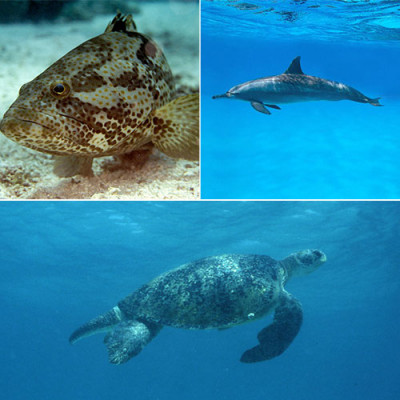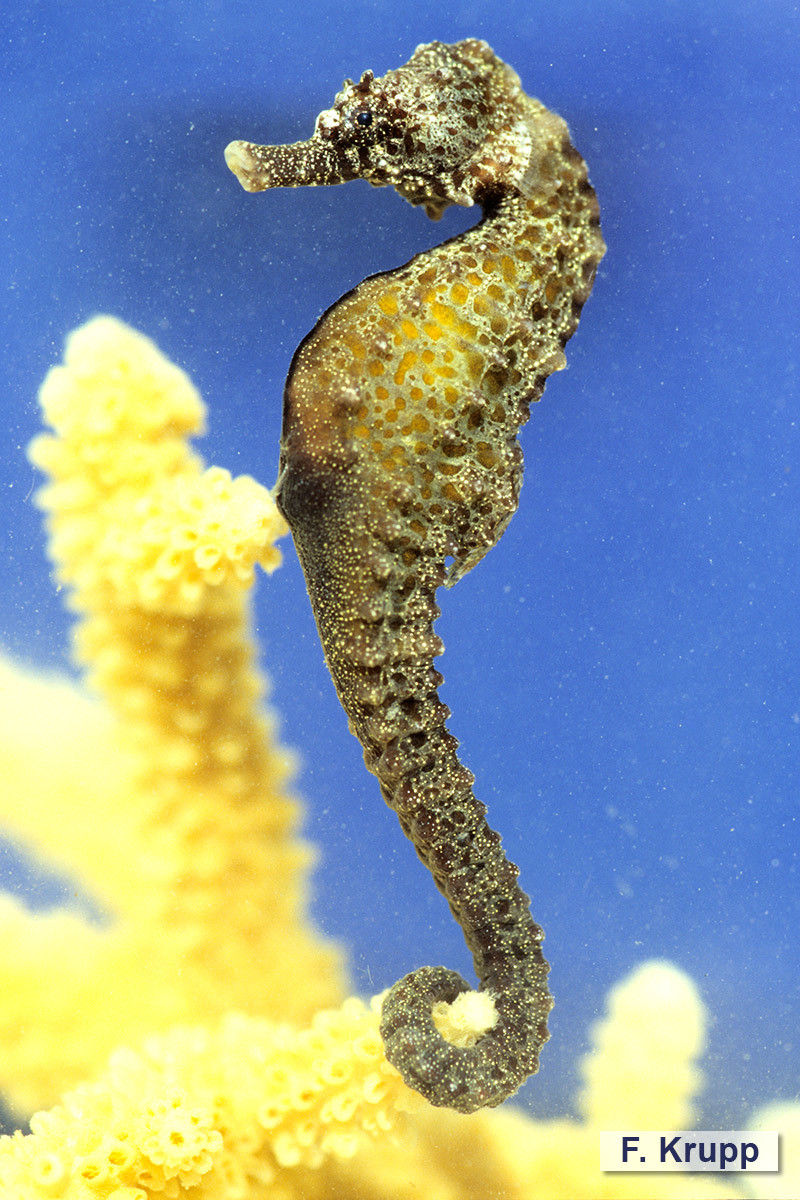Name: Common Seahorse
Local name: Wez
Scientific name: Hippocampus kuda
Classification: Class: ray-finned fishes; Order: pipefishes; Family: pipefishes and seahorses (Syngnathidae)
Size: It may reach a maximum length of 30 cm, but is usually much smaller.
Habitat:
Seahorses are benthic to pelagic and may be found in seagrass or macroalgal beds, in coral assemblages, or in open water and attached to drifting Sargassum. They feed on zooplankton. They are ovoviviparous with males carrying the eggs in a brood pouch under the tail and giving birth to life young.
Distribution:
The Common Seahorse is widely distributed in the Indo-Pacific, from eastern and southern Africa, via Australasia to Micronesia, north to Japan, and south to Australia.
Conservation status:
In the IUCN Red List of Threatened Species global assessment it has been classified as Vulnerable (VU); in the Arabian Gulf regional assessment it is listed as Data Deficient (DD). It is a popular aquarium fish. International trade is monitored through a licensing system (CITES Appendix II) and a minimum size of 10 cm applies.
Description:
This large seahorse species has only short spines and tubercles on its body ridges. The head is relatively large and flexed sharply downward. The snout is short and thick. A coronet of five small tubercles projects obliquely backwards. The distal part of the tail is prehensile and typically coiled. The coloration is variable ranging from yellow, to brown, black, or black irregularly barred with white. Some specimens are cream-colored or reddish with blotches and numerous small dark spots.








